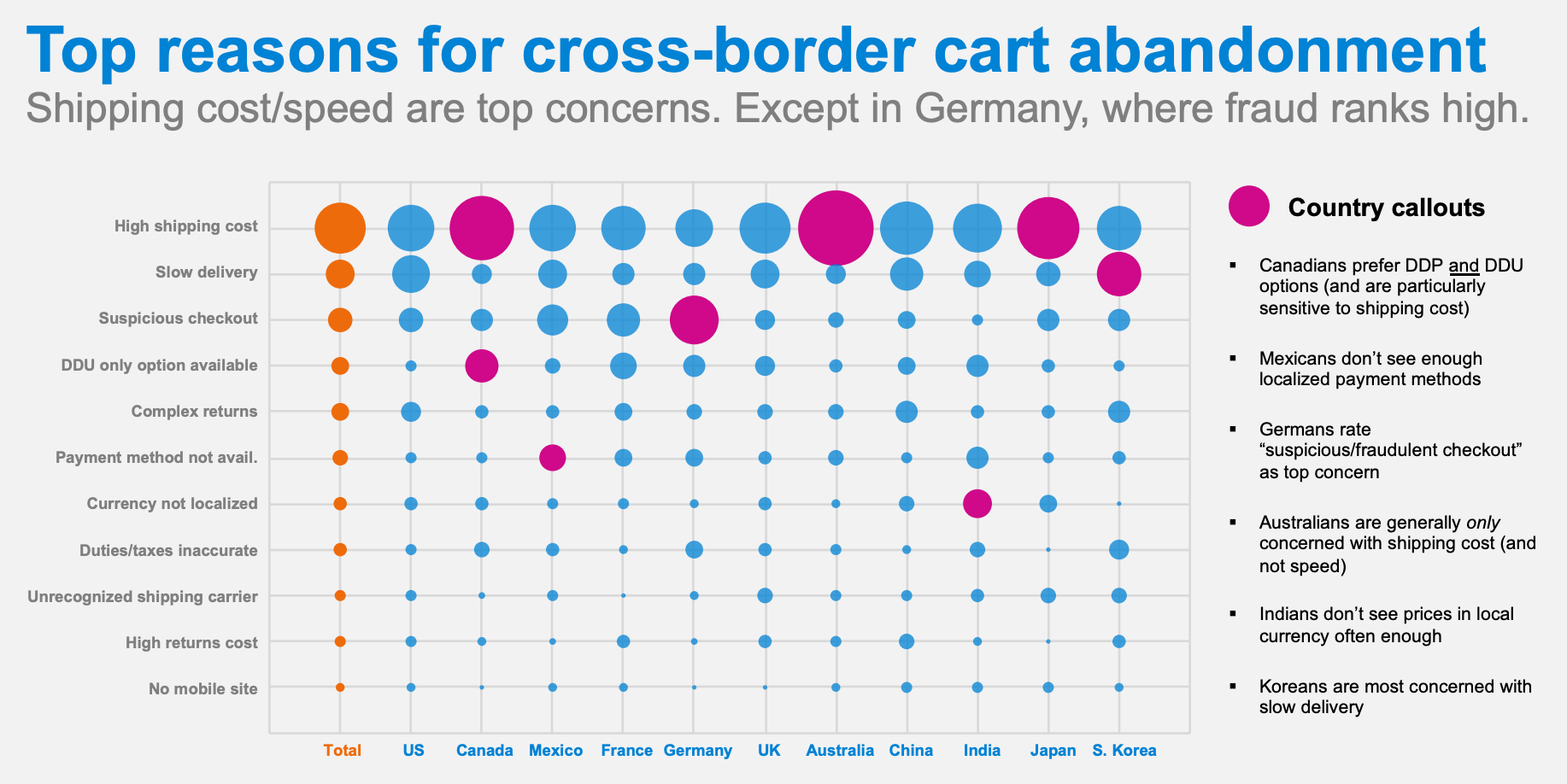How to Set Your Shipping Rate
In this blog post, we look into one of the biggest challenges for online sellers - how to set the shipping rate.

Whether you’re a consumer or an online seller, we all know this fact - shipping, and in particular, shipping cost, is one of the most pivotal factors influencing consumers’ purchase decision when it comes to online shopping.
According to Pitney Bowes’ 2018 Global Ecommerce Study, high shipping cost was found to be the top reason for cart abandonment across the globe.

In the 2018 survey from Rakuten and Slice Intelligence, shipping fees and returns was found to be the top reason for frustration among online shoppers.
This sentiment is even more pronounced in Japan, where consumers have come to expect fast and cheap door-to-door delivery as the norm. In the consumer survey by Netshop, high shipping cost was mentioned as the biggest cause for dissatisfaction among online shoppers.

As a result, for online sellers, setting the shipping rate is a key decision that has a significant impact on both sales and margins. At the same time, this is not an easy task, with many factors to consider. So, how do you get started?
Strategies for setting shipping rate
To begin with, it’s important to understand the different strategies available for setting the shipping rate. Broadly, there are two main options.
Free Shipping
Free shipping is a simple strategy to implement, that will yield the highest consumer satisfaction. It is also a useful marketing tactic that can entice customers visiting the store. However, Free Shipping doesn’t always have to be Free, and there are various ways to offer some form of Free Shipping.
1) 100% borne by seller: The most obvious way to offer Free Shipping is to absorb 100% of the shipping cost as a seller. Yet, it comes at a cost, and should be utilized wisely. The first important check is to see what your current margins are, and whether you are prepared to take the direct cut on your margins by absorbing the shipping cost fully.
2) 100% borne by customer: You can offer “Free Shipping” but price in the shipping cost. For example, if you’re planning to sell an item at $20, but the shipping cost is $5, you would charge $25 and offer “Free Shipping”. This typically works well for higher priced items, while it will be tricky to implement for price-sensitive items.
3) Combination: You can subsidize the cost of shipping partially as a seller instead of absorbing 100% of the cost. In the above example, you could either charge a lower shipping rate instead (e.g., sell the item at $20 and charge shipping fee of $2.50), or price in the shipping cost partially (e.g., sell the item at $22.50 and offer “Free Shipping”).
Direct Shipping Charges
Alternatively, you can directly charge your customers for shipping charges to be incurred. There are different options of setting the shipping rates.
1) Flat rate: You can set a flat shipping rate for all items regardless of the weight and size. This is simple and fuss-free, but typically works when you have SKUs with similar weights and sizes.
2) Table rate: For sellers with varying SKUs and destinations, shipping rates can be set based on a ‘table’ of rates, which factor in variables such as location, weight, and number of items in the cart.
3) Live rate: Some e-commerce platforms enable you to display real-time rates from carriers. In this way, you provide full transparency to your customers of the shipping cost upon check out, while at the same time, fully protecting your margins.
It’s not always Black or White
Given various options, how do you go about choosing what strategy works best for you? Is providing free shipping the only way to go? Interesting, another survey conducted by Netshop revealed that 48% of consumers surveyed think shipping costs should be shared between sellers and buyers, while only 15% think they should be borne entirely by the seller.
This means that there isn’t a strict ‘norm’ that needs to be followed. And it’s not Black or White either - there can be various combination options that mixes various strategies that meets each business' needs. The following are some common examples:
Free shipping for standard only: Provide free shipping for standard delivery only and charge for next day or same day delivery.
Free shipping up to a certain weight: Provide free shipping up to a certain weight limit, and beyond that, charge for shipping (partially or fully) given the high shipping costs that will be incurred for heavier parcels.
Free shipping beyond a certain spend: Entice customers to spend more by leveraging free shipping as a carrot. For example, if your typical basket size is $80, you might want to offer free shipping for spend more than $100 to stretch your customers’ spend and in turn have more absolute margins to cover the shipping costs.
Free in-store pick-up: If you have an offline shop in addition to your online shop, offering the option for customers to pick up at your store could be a good opportunity to create another interaction point with your customers.
Conclusion
Setting the shipping rate is no easy feat, with many factors to consider.
If you’re at the beginning of this journey, or looking to refine your shipping strategy, the first step is to clarify your objectives for the near term, as this will impact what option you should take. For example, if your objective is to raise awareness of your brand and boost volumes in the short term, using Free Shipping could be a powerful marketing strategy.
Whichever option you end up choosing, the most important point we’d like to leave you with is to experiment. Test out an option, and see the results. Quickly learn from the results, refine, and experiment again. It may take some time, but it is through this reiterative process that you discover what shipping strategy works best for you, at different stages of your business.
About Ship&co
Ship&co is a global shipping platform designed by and for e-commerce sellers. Created by the team behind Bento&co, who have been selling on Shopify since 2008, Ship&co provides a simple and easy-to-use web dashboard and shipping API. Ship&co helps online sellers ship packages faster by automatically syncing orders and creating shipping labels and invoices in minutes. With Ship&co, you can create shipping labels for FedEx, UPS, DHL, NinjaVan, Yamato, Sagawa, and more, with just two clicks to complete the process and mark your orders as shipped. For more information on Ship&co, visit shipandco.com or reach out to us via [email protected] !
